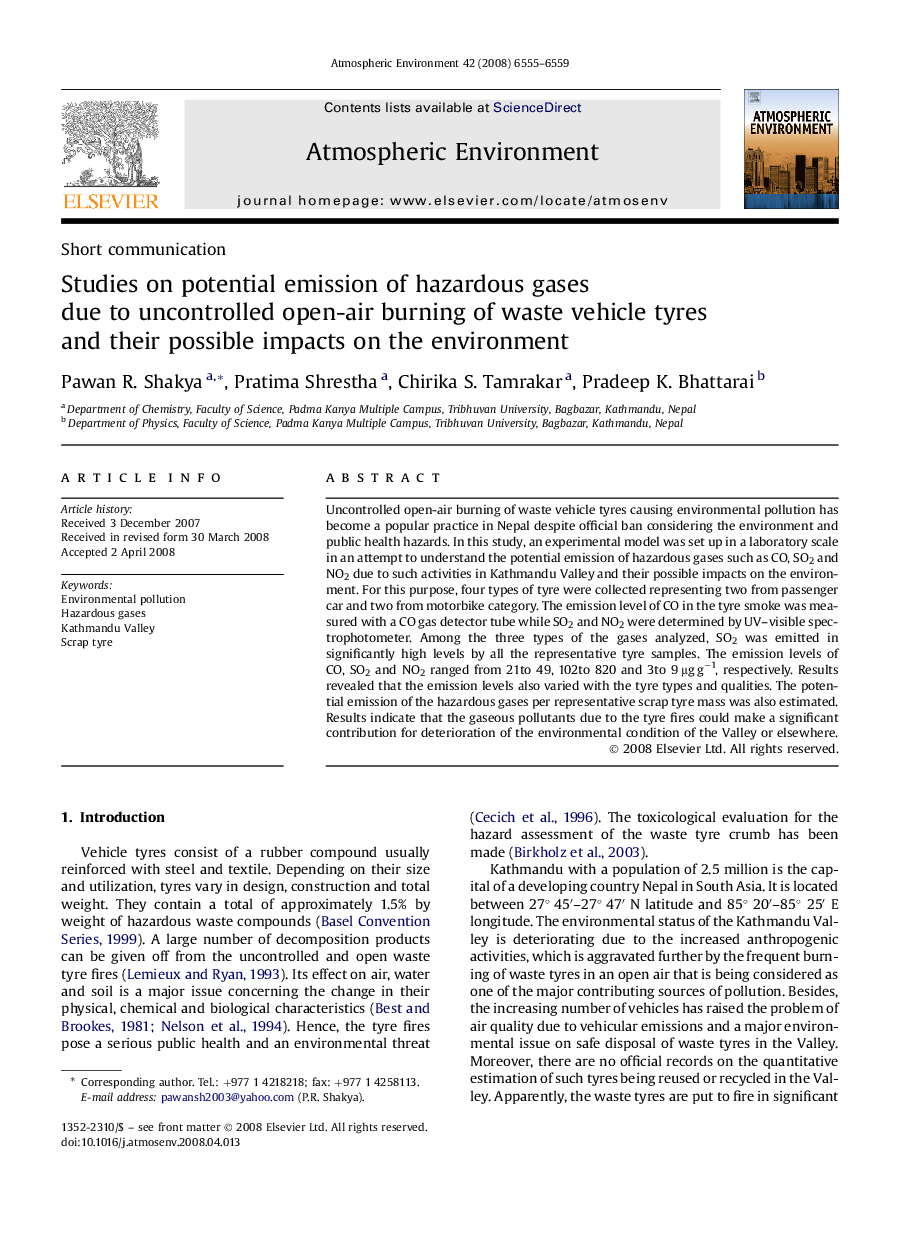| Article ID | Journal | Published Year | Pages | File Type |
|---|---|---|---|---|
| 4442556 | Atmospheric Environment | 2008 | 5 Pages |
Uncontrolled open-air burning of waste vehicle tyres causing environmental pollution has become a popular practice in Nepal despite official ban considering the environment and public health hazards. In this study, an experimental model was set up in a laboratory scale in an attempt to understand the potential emission of hazardous gases such as CO, SO2 and NO2 due to such activities in Kathmandu Valley and their possible impacts on the environment. For this purpose, four types of tyre were collected representing two from passenger car and two from motorbike category. The emission level of CO in the tyre smoke was measured with a CO gas detector tube while SO2 and NO2 were determined by UV–visible spectrophotometer. Among the three types of the gases analyzed, SO2 was emitted in significantly high levels by all the representative tyre samples. The emission levels of CO, SO2 and NO2 ranged from 21to 49, 102to 820 and 3to 9 μg g−1, respectively. Results revealed that the emission levels also varied with the tyre types and qualities. The potential emission of the hazardous gases per representative scrap tyre mass was also estimated. Results indicate that the gaseous pollutants due to the tyre fires could make a significant contribution for deterioration of the environmental condition of the Valley or elsewhere.
